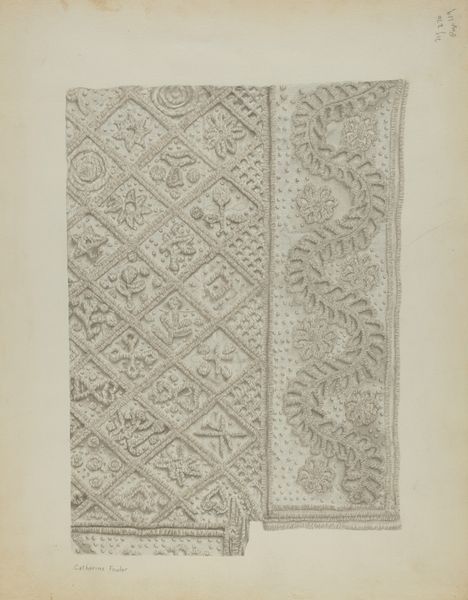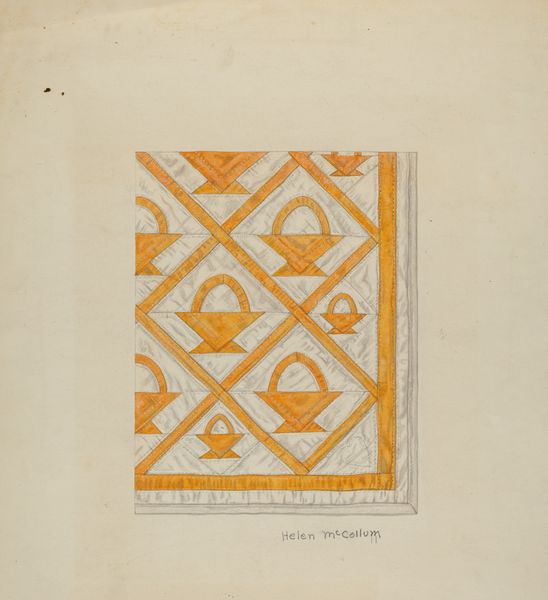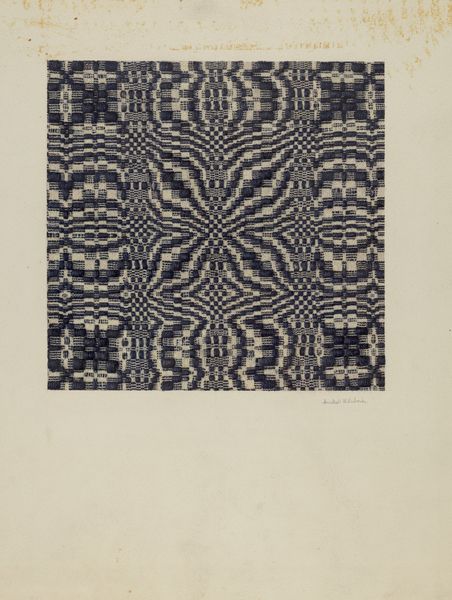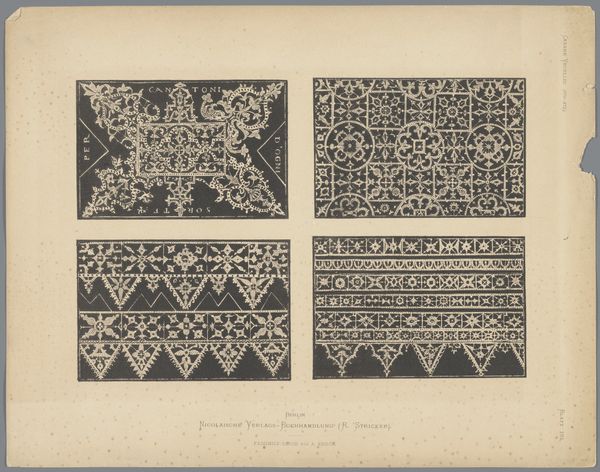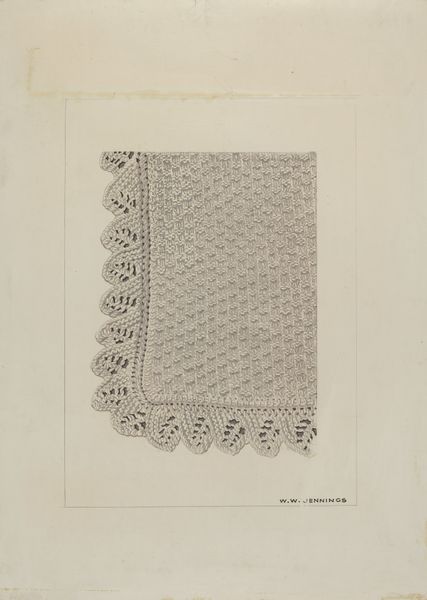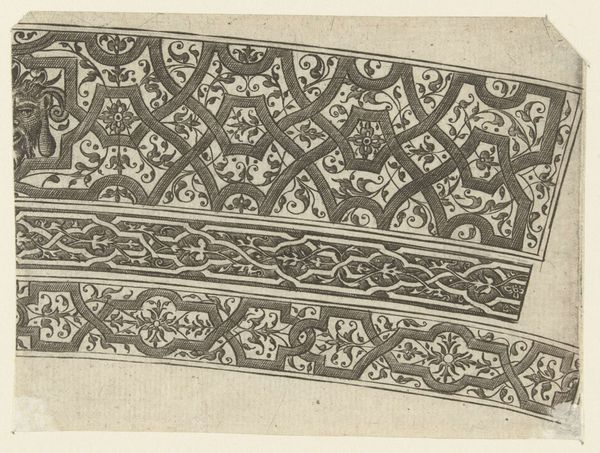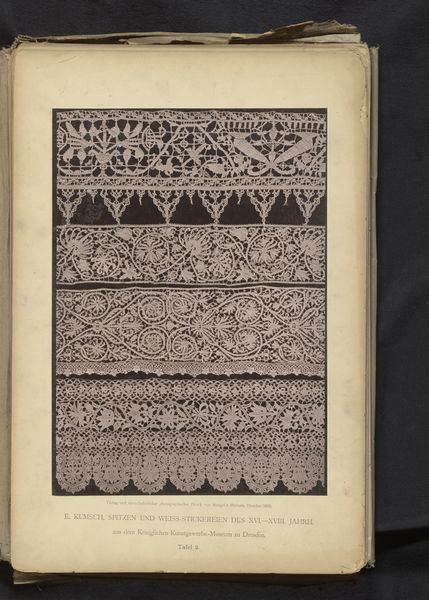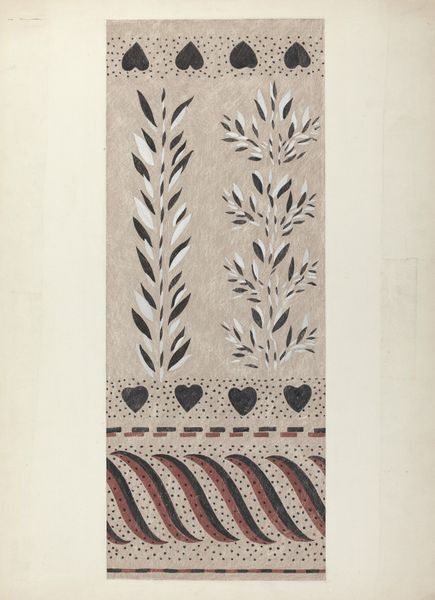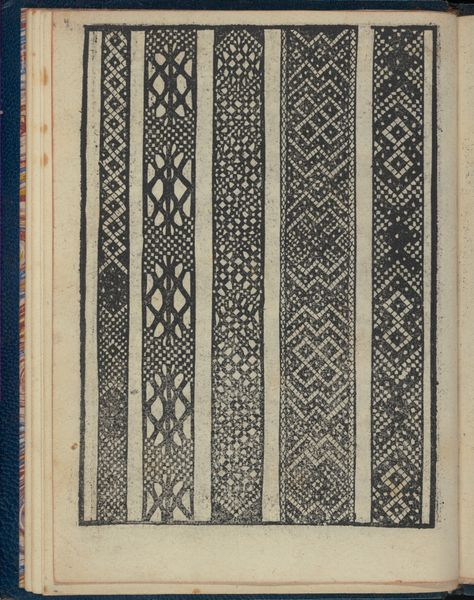
drawing, paper, pencil
#
drawing
#
light pencil work
#
pattern
#
paper
#
geometric
#
pencil
#
line
Dimensions: overall: 30.7 x 22.9 cm (12 1/16 x 9 in.)
Copyright: National Gallery of Art: CC0 1.0
Curator: I’m immediately struck by the delicate precision of this work; it seems to exude an almost monastic devotion to detail. Editor: Here we have Raymond Manupelli’s “Lace Edging,” created around 1942 using pencil on paper. Manupelli offers a series of meticulously rendered lace patterns. Curator: Thinking about this work within its historical context, specifically 1942, brings forth associations of craft as labor, especially performed by women. The laborious and painstaking process behind lace making has often been minimized in favor of the aesthetic result. Does this resonate with you? Editor: Absolutely. The medium here – humble pencil on paper – echoes that perceived "humbleness" of craft. The labor-intensive nature is evident in the textures; the drawing meticulously replicates a tactile process, forcing us to consider both the artistic labor and the material labor of the lace maker. I wonder about Manupelli's access and relationship to these objects as well. Curator: Manupelli, as a male artist, representing this “feminine” art form is a dialogue about gender and artistic labor itself. What could have driven this exploration? Perhaps a way to elevate a devalued practice, or maybe even critique societal hierarchies? It raises interesting questions about class and gender, don't you agree? Editor: Definitely. It also begs us to consider the use and consumption of lace as commodity during the 1940s. Where does this lace originate, and for what purpose might it have been used? Perhaps Manupelli is silently commenting on the mass manufacture, production and use of goods by carefully studying the intricate processes used to produce the materials. Curator: The repeated geometric elements can be interpreted as symbolic motifs, suggesting continuity, memory and the role of craft in cultural identity during that specific time period. Lace was intrinsically tied to family legacies; perhaps he is acknowledging that tradition here. Editor: Considering the sheer repetition of motifs, this study in pencil seems a testimony to manual making under unique conditions, especially as industry may have altered labor roles at the time. A subtle meditation on making, production and consumption. Curator: I leave now reflecting on the way so-called women’s work contributes in unseen and invaluable ways to our daily lives. Editor: For me, the pencil here isn’t just graphite, it embodies unseen skilled human labor.
Comments
No comments
Be the first to comment and join the conversation on the ultimate creative platform.


